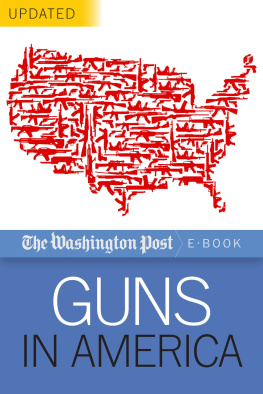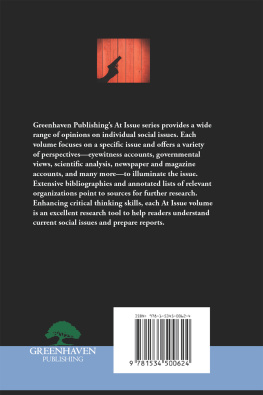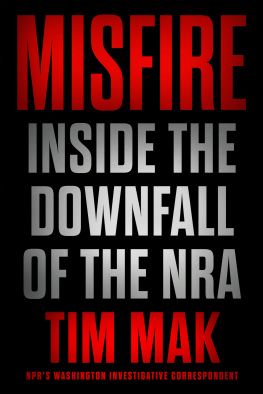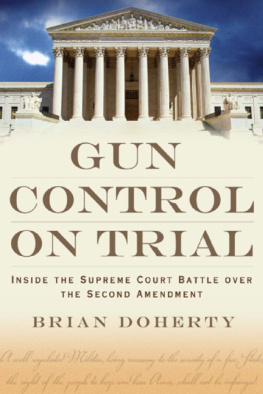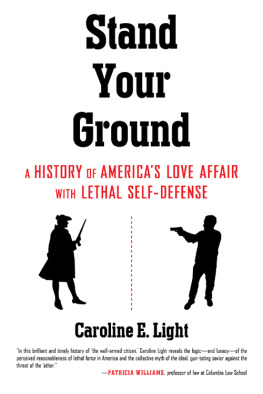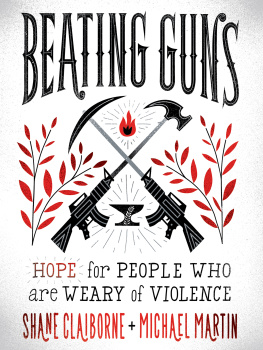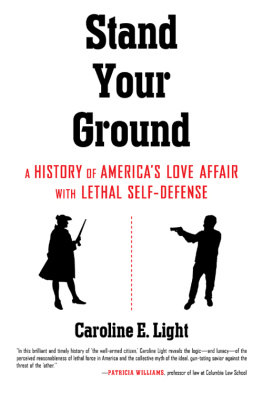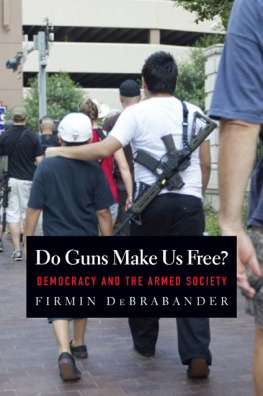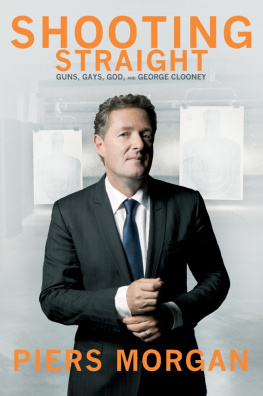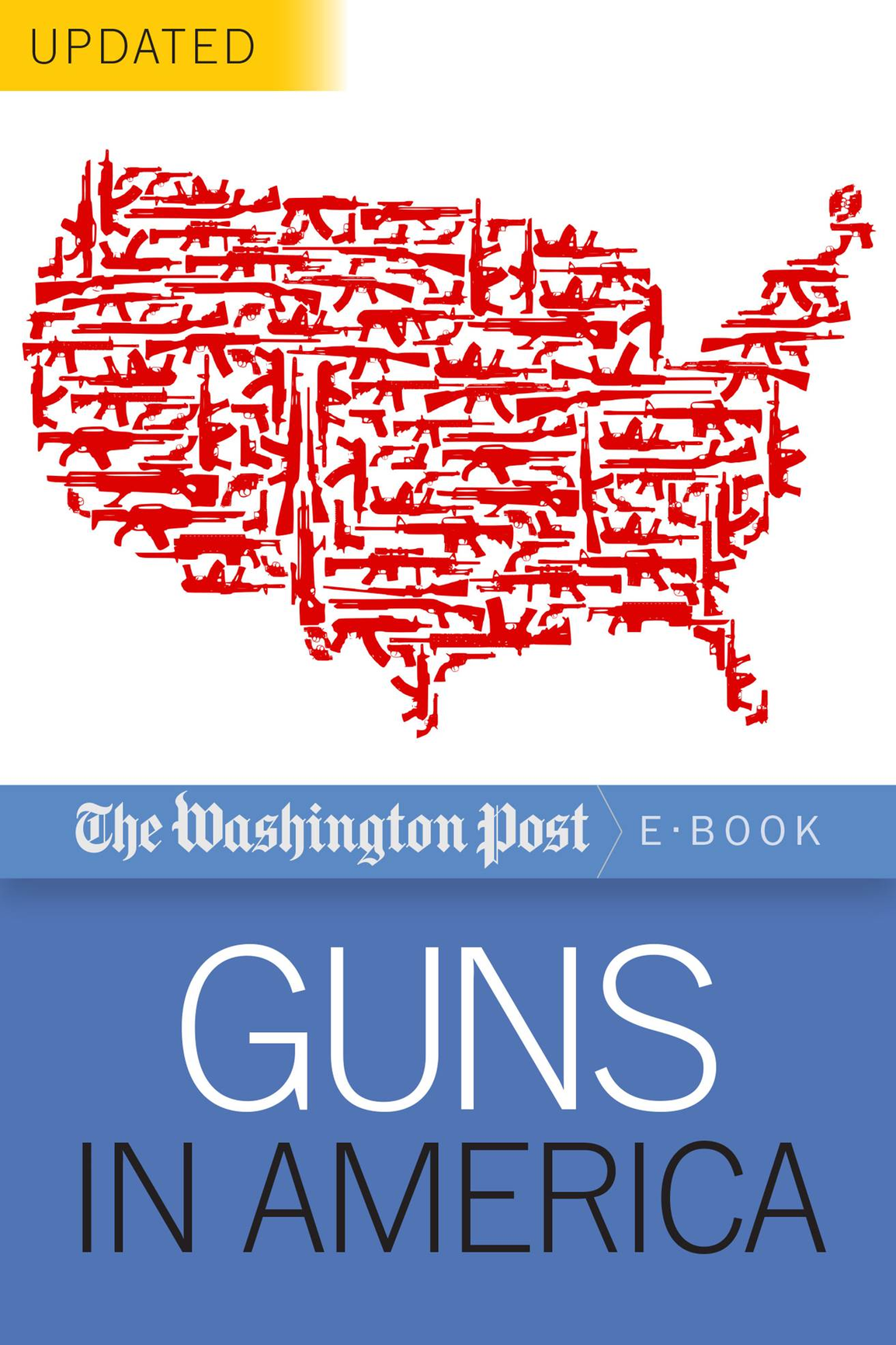All rights reserved, including the right to reproduce this book or portions thereof in any form whatsoever.
For more information, email info@diversionbooks.com.
First Diversion Books edition February 2013.
Updated Diversion Books edition September 2013.
Introduction
Adam Lanza shot his way into Sandy Hook Elementary School. Armed with a Bushmaster assault rifle, high-capacity magazines and two semi-automatic handguns, he fired at least 154 rounds and executed 20 first-grade students and six educators. As police closed in, the 20-year-old gunman shot and killed himself.
The December 2012 massacre in Newtown, Conn., lasted less than five minutes but catapulted the issue of guns to the forefront of Americas consciousness. More than 300 million firearms are in circulation. President Obama has called for new gun control measures. The horrific event touched off an outpouring of questions.
What can be done to keep guns out of the hands of criminals?
How do guns move from store counters to crime scenes?
Have politics compromised our nations gun policies?
Washington Post writers have sought to answer these and many other questions in this collection of more than 30 stories that explores the landscape of guns in America from a spectrum of angles, politics and perspectives.
In the aftermath of Newtown, The Post investigated.
Reporters examined the long, bloody history of the fight to regulate firearms, noting that the gun-control and gun-rights groups speak entirely different languages.
The Post deconstructed the transformation of the National Rifle Association from a marksmanship organization to a feared and unrivaled gun lobby with more than 4 million members. Controversy, as one story noted, is a motivator that drums up support for the NRAs hard-line interpretation of the Second Amendment.
Writers also explained how a shield law imposed by Congress to protect the firearms industry would likely block the families of Newton victims who seek to hold gun makers accountable.
And another report followed the surviving family of a 7-year-old, first-grade boy killed at Sandy Hook elementary. The writer detailed their torn lives as the gun control debates in Congress ended, the daily drumbeat of media coverage faded, and they were finally coming into the lonely quiet.
The Post laid the groundwork for the post-Newtown coverage more than two years ago when a team of reporters investigated the unseen consequences of gun politics, gun laws and gun crimes. That digging culminated in a series of stories, also included in this collection, called The Hidden Life of Guns.
That investigation pierced the Congressionally-imposed secrecy surrounding gun sales at local, state and national levels. It scrutinized the types and sources of guns used in the killings of more than 500 law enforcement officers. And, it showed how politics has hamstrung efforts to curb gun violence and gun trafficking by the federal Bureau of Alcohol, Tobacco, Firearms, and Explosives.
The fight over the tracing of guns seized at crime scenesthe ATFs chief investigative toolepitomizes the larger political battle. Tracing uses a guns serial number to identify the dealer that first sold the weapon. Researchers in the 1990s were surprised to find that a fraction of the nations gun dealers sold most of the traced crime guns. The publicity put a spotlight on the gun industry.
After the gun lobby complained that tracing unfairly tarnished honest dealers, Congress forbid the ATF from disclosing the once-public data.
Politics also have forced the ATF to trace crime guns by hand: ATF employees must often piece together aging gun sales logs with tape and magnifying glasses to learn where the gun originated. At the gun lobbys behest, Congress has prevented ATF from compiling gun ownership records into a searchable database.
Computerization, the NRA contends, would constitute a national gun ownership registry and be a forerunner to the governments confiscation of guns in private hands. The NRA says its work has been to protect gun owners constitutional rights and has not impeded law enforcement.
In the 2 years since the original Post series, gunmen have killed and injured scores of people in multiple mass shootings.
In January 2011, Jared Lee Loughner opened fire outside a Tucson grocery store, killing six people and wounding 13, including Rep. Gabrielle Giffords (D-Ariz.). In September 2011, Eduardo Sencion shot 14 and killed four people at an IHOP restaurant in Carson City, Nevada. In July 2012, James Holmes killed 12 and wounded another 58 in an Aurora, Co., movie theater. And, in August 2012, Wade Michael Page opened fire at a Sikh temple in Oak Creek, Wis., killing six and injuring others.
After the mass shooting at Sandy Hook, the Obama Administration proposed some of the most-sweeping gun reforms in decades, including universal background checks, bans on assault weapons and large capacity magazines.
Gun rights activists, the industry and the gun lobby promised a fight of the century and pushed back against what some described as a misdirected attack on the Second Amendment. The only thing that stops a bad guy with a gun is a good guy with a gun, said NRA Vice President Wayne LaPierre in the wake of the Sandy Hook slaughter.
The renewed efforts in Congress soon stalled. Lawmakers disagreed on whatif anythingshould be done.
The Posts Guns In America examines the impact of a 40-year-old war over the Second Amendment.
By David S. Fallis
PART ONE: The Big Picture
A Glock 9mm semi-automatic pistol is fired in the shooting range at Bobs Guns in Norfolk, Va. (Ricky Carioti)
History of gun control is cautionary tale
By Scott Higham, Sari Horwitz, David S. Fallis and Joel Achenbach
Saturday, December 22, 2012
At 3 a.m. on July 2, 1993, Steve Sposato sat down in his darkened living room to write, by hand, a letter to the president of the United States. His life had just been shattered.
Hours earlier, in the afternoon, a deranged man armed with semiautomatic weapons had gone on a rampage, slaughtering eight people at an office building in downtown San Francisco. The gunmans motive would remain forever a mystery. Among the slain: Steves wife, 30-year-old Jody Jones Sposato, the mother of his 10-month-old daughter, Meghan.
His anguished letter to the president asked how it was possible for someone to possess rapid-fire weapons with 30-round magazines, seemingly designed to kill as many people as possible as quickly as possible. Now Im left to raise my 10-month-old daughter on my own, he told the president. How do I find the strength to carry on?
That letter reached President Bill Clinton. The next year, Sposato stood by Clintons side in the Rose Garden as the president demanded that Congress pass a ban on assault weapons, such as the TEC-9s used to kill Sposatos wife. Sposato testified on the Hill wearing little Meghan on his back in a baby carrier.

